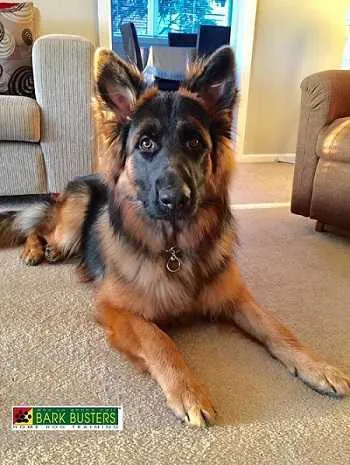Tips for Dog Owners in Apartments or Units

We all know what joy having a canine companion can bring, no matter where we call home. However, for those who live in multi-unit dwellings, a misbehaving dog whose barking and bad manners disturbs others can easily cause ill-will among the most rational of tenants.
Bark Busters, the world's largest dog training company, offers tips for dog-owners who share living space in apartments, units, townhouses and the like.
Before moving into your new residence, thoroughly check the unit and complex surroundings for potential dog hazards to ensure your dog's safety.
Socialising your dog is essential in a busy, high-traffic environment. As soon as you move in, introduce yourself and your dog to your immediate neighbours. This lets your dog become familiar with the people-and dogs-they may encounter every day. Get to know other canine-owning neighbours so you can care for each another's dogs in the event of delays in getting home.
Be respectful of others. Before getting on an elevator, ask if everyone is comfortable with your dog riding along. If there is already another dog inside, wait for the next one or take the stairs. A small confined area can become a threatening environment for the dogs.
Always position yourself between your dog and passersby in hallways and other public areas. Take extra care when walking on staircases. Small dogs may fall between the stairs or through the railings. In addition, you could trip on your dog as you both manoeuvre the steps. Train your dog to walk slowly by your side when on stairs, and to wait to give other residents the right of way.
Consider taking an obedience class or having one-on-one training with your dog-you'll both learn a lot and be better neighbours. In addition, making your dog think expends as much energy as physical activity. Provide 10-15 minutes of training daily on basics such as sit, stay, come, and walking on lead. Doing this twice a day is even better.
If the weather is bad, practice obedience with your dog in the building's hallways and lobbies (if safe), as well as at home.
Keep your dog busy when indoors by providing high-quality, treat-rewarding toys such as the GameChanger® or KONG®. Switch out their toys every few days so they have new and fun things to hold their interest.
Don't let your dog become a nuisance barker. If they bark when you are at home, learn ways to manage their noisy behaviour to help you and your neighbours enjoy a quieter living environment. If they bark when you are away from home, consult with a qualified dog behavioural therapist to learn how to stop the barking and keep the peace.
Consider crate-training your dog. Because dogs are descended from den-dwelling animals, a crate or pet carrier makes a natural shelter. Provide soft bedding and keep the crate in an area of your home where they feel most comfortable. Crating your dog when you're not home ensures a safe environment for them, minimises chances of their barking, and helps prevent them from causing damage. Avoid leaving your dog unattended or locked on an apartment balcony.
Get training that will help you understand your dog. Knowing your dog's unique temperament and tendencies will help you to better control how they behave. A well-behaved dog is less likely to upset people and other pets in public places, will be more welcome at gatherings, and will enjoy a better relationship with everyone they meet. Plus, their good manners will reflect positively on you, their responsible owner.
Tips for Dog Owners in Multi-Unit Residences - Multi Unit Residences
Recent Articles
- Leash Training - How to Stop your Dog from Pulling on Walks
- Dog Aggression Training & Tips
- Halloween Safety Tips for Dog Owners
- Why Is My Dog Barking So Much? Understanding Excessive Barking and How To Help
- Understanding and Training Dogs with Separation Anxiety
- Dogs need education too!
- Winter woes? A dog-lover's guide to solving winter blues
- The Importance of Dog Training
- The Truth About Those Dog Myths
- You Can Prevent Dog Bites
